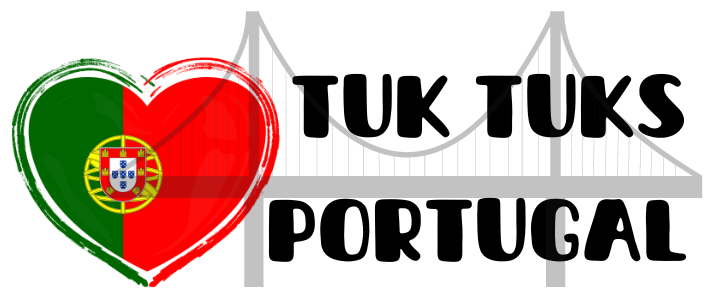Ponte de Dona Maria Pia, located in Porto, Portugal, is a remarkable engineering marvel designed by the renowned Gustave Eiffel. Completed in 1877, it served as a railway bridge over the Douro River for over a century. This iconic structure showcases Eiffel’s innovative approach to bridge design, using a combination of wrought iron and lattice trusses.
Ponte de Dona Maria Pia: Gustave Eiffel’s Architectural Masterpiece
Ponte de Dona Maria Pia, also known as Maria Pia Bridge, stands as a testament to the genius of renowned architect Gustave Eiffel. Completed in 1877, this architectural masterpiece spans the Douro River in Porto, Portugal, and showcases Eiffel’s innovative use of wrought iron.
The University of Porto’s role in the bridge’s conception and construction
The University of Porto played a crucial role in the conception and construction of the Ponte de Dona Maria Pia, Gustave Eiffel’s iconic creation. As one of the leading engineering institutions in Portugal, the university provided invaluable expertise and knowledge during the planning and design phases of the bridge.
Gustave Eiffel’s engineering brilliance
Gustave Eiffel, renowned for his engineering brilliance, showcased his extraordinary talent with the creation of Ponte de Dona Maria Pia. As the mastermind behind the iconic Eiffel Tower, Eiffel’s expertise in structural engineering was unrivaled. This was evident in his innovative design for the railway bridge, which spanned the Douro River in Porto, Portugal.
Other important figures associated with the project
Other important figures associated with the Ponte de Dona Maria Pia project, showcasing Gustave Eiffel’s engineering brilliance, include Theophile Seyrig and Antonio Adao da Fonseca. Theophile Seyrig, a talented engineer and Eiffel’s collaborator, played a crucial role in the design and construction of the bridge, contributing his expertise and innovative ideas.
An in-depth look at the Ponte de Dona Maria Pia
An in-depth look at the Ponte de Dona Maria Pia unveils Gustave Eiffel’s engineering brilliance and showcases his remarkable creation. This iconic iron railway bridge, located in Porto, Portugal, stands as a testament to Eiffel’s revolutionary design principles. Completed in 1877, the bridge served as a crucial transportation link, connecting Porto with Vila Nova de Gaia.
Design and structure of the bridge
The design and structure of the Ponte de Dona Maria Pia, Gustave Eiffel’s creation, highlight his engineering brilliance. The bridge, completed in 1877, spans the Douro River in Porto, Portugal, and showcases Eiffel’s innovative use of wrought iron.
Overall dimensions and materials used in construction
The Ponte de Dona Maria Pia, a testament to Gustave Eiffel’s engineering brilliance, stands as an iconic structure in Porto, Portugal. This historic bridge, completed in 1877, showcases Eiffel’s mastery of iron and steel construction. The overall dimensions of the bridge span 352 meters in length and 61 meters in height.
Features that set the bridge apart from others
The Ponte de Dona Maria Pia, designed by the esteemed engineer Gustave Eiffel, stands out among other bridges due to its remarkable features. Eiffel’s engineering brilliance is evident in the innovative design and structure of the bridge. One of the notable aspects is the use of a single arch made of wrought iron, which was a pioneering technique at the time.
Pioneering technologies used in the bridge
Ponte de Dona Maria Pia, Gustave Eiffel’s creation, showcased his engineering brilliance and pioneering technologies used in bridge construction. Alongside Eiffel, other important figures associated with the project included Théophile Seyrig, who served as the project’s chief engineer.
Their historical and cultural significance
The historical and cultural significance of Ponte de Dona Maria Pia lies in its association with the renowned engineer Gustave Eiffel and his engineering brilliance. As one of the most important figures in the project, Eiffel’s expertise and innovative approach to bridge design contributed to the creation of this iconic structure.
The bridge’s role in Portugal’s development
The Ponte de Dona Maria Pia, a creation of Gustave Eiffel, played a significant role in Portugal’s development. Completed in 1877, this engineering masterpiece connected the city of Porto with the southern bank of the Douro River, facilitating trade and transportation.
Heritage preservation efforts
Heritage preservation efforts have played a crucial role in ensuring the longevity and recognition of Ponte de Dona Maria Pia, Gustave Eiffel’s iconic creation. Recognizing the engineering brilliance of Eiffel, who is also renowned for designing the Eiffel Tower in Paris, efforts have been made to protect and maintain the bridge’s historical and cultural significance.
Gustave Eiffel’s other notable works
Gustave Eiffel, renowned for his iconic creation, the Eiffel Tower, was also the mastermind behind several other notable works that showcased his engineering brilliance. Apart from the Ponte de Dona Maria Pia, Eiffel’s portfolio includes the Garabit Viaduct in France, which displayed his pioneering use of wrought iron in bridge construction.
The Eiffel Tower, France
The Eiffel Tower, located in France, is one of the most iconic structures in the world and a testament to Gustave Eiffel’s engineering brilliance. Standing at a height of 324 meters, this monumental iron lattice tower was constructed between 1887 and 1889. The tower’s design and structure showcase Eiffel’s innovative techniques and pioneering use of wrought iron.
Garabit Viaduct, France
The Garabit Viaduct, located in France, is another iconic masterpiece designed by Gustave Eiffel. Completed in 1884, this impressive railway bridge spans the Truyère River and stands as a testament to Eiffel’s engineering brilliance.
Statue of Liberty, United States
The Statue of Liberty, located in the United States, is an iconic symbol of freedom and democracy. Designed by French sculptor Frédéric Auguste Bartholdi, this colossal statue was a gift from France to the United States.
List of other projects
In addition to the iconic Ponte de Dona Maria Pia, Gustave Eiffel’s portfolio boasts an impressive list of other groundbreaking projects. His engineering brilliance can be seen in the world-renowned Eiffel Tower in France, which stands as a symbol of architectural innovation.
